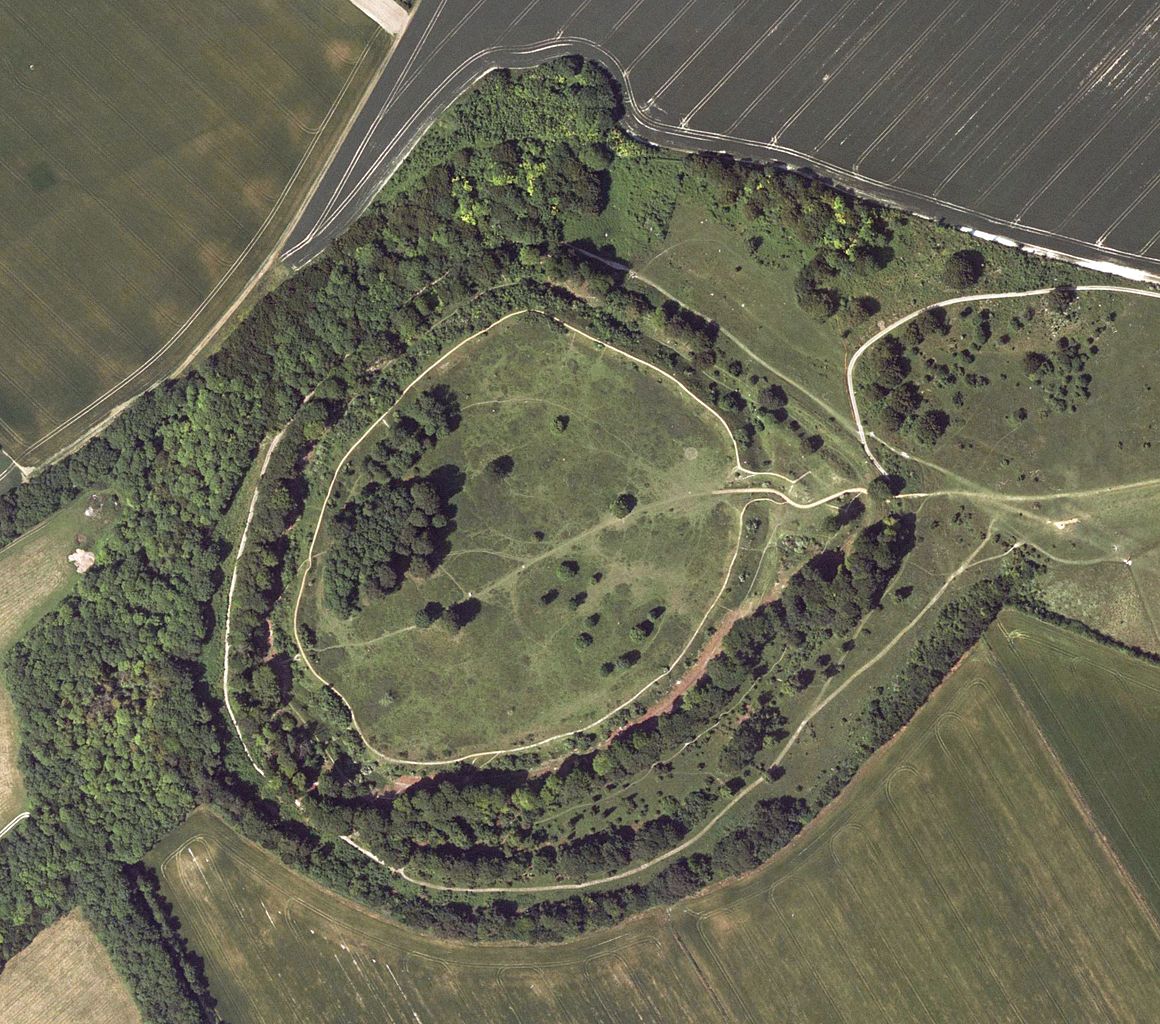Often enclosing huge areas within massive banks and ditches, these must have represented an immense investment of time and labour for the communities that built them. Typically reaching between one and six hectares (equivalent to about eight football pitches) in size, some of the biggest such as Maiden Castle in Dorset were many times as big again. Others were much smaller, sometimes little more than an individual farmstead.

Hillfort building reached its peak at different times in different places. In most of Europe, including Britain, where there are more than 2,000 known hillfort sites, the great majority seem to have been built during the fifth and sixth centuries BC. Most of these were abandoned after around 400-350 BC, however, with only a very much smaller number continuing in use.
Developed hillforts
These ‘developed hillforts’, as archaeologists term those that continued in use, include some of the best-known Iron-Age sites in Britain – places such as Maiden Castle, Cadbury Castle and Danebury. Most of them have a series of huge ramparts encircling the site, together with elaborate entrance structures consisting of complex passageways and earthworks.
It is thought that the developed hillforts came to dominate their neighbours over a period of time. Smaller, or weaker, hillfort settlements may have been abandoned as a result of defeat in battle or peace treaties with their more dominant rivals. In time, just a small number of dominant leaders, or tribes, came to rule over the rest.
Population growth, climate and conflict
The initial development of hillforts during this period is traditionally ascribed to climatic deterioration and increasing population pressures leading to conflicts between neighbouring tribes. It is estimated that in the period between Stonehenge and similar monuments falling out of use to when hillforts were being developed across Britain the population increased fivefold, from about 200,000 to more than a million. This was also the period that has been associated with possible invasions or settlement in Britain by the peoples known as Celts.
However, most archaeologists now believe that the hillforts of Iron-Age Britain had as much to do with expressions of status or prestige, or delineating territory or areas of influence as with actual conflict. They have pointed out obvious defensive deficiencies in the structure of sites, many of which are only at their most impressive where they are most clearly visible, implying that their role as strongholds at times of war may be exaggerated. On the other hand, we know from the archaeological evidence, including finds such as slingshot, that some hillforts at least must have been the scenes of actual battles at some stage in their existence. Excavations at Danebury, for example, have revealed evidence of at least two major fires. Different hillforts could probably tell very different stories.
Barry Cunliffe, whose excavations at Danebury over more than two decades have provided the most comprehensive investigation of any British hillfort, says that when the population is growing, ‘Undoubtedly there is a stress factor. So the hillforts could be seen as a reflection of that, which also provided defensive possibilities for the community at those times when the stress burst out into open warfare. But I wouldn’t see them as having been built because there was a state of war. They would be functional as defensive strongholds when there were tensions and undoubtedly some of them were attacked and destroyed, but this was not the only, or even the most significant, factor in their construction.’
Different functions
There is a huge range of different structures or settlements that fall under the general description of ‘hillforts’. Some probably served as small towns and administrative centres, while others show little or no sign of occupation inside the enclosed area. Some were occupied for several centuries; some appear hardly to have been used at all. Some evidently served very practical functions, as shown by the prevalence of grain storage pits and other structures at many sites; others seem to have had a more ceremonial or ritual purpose.
Whatever their individual functions and histories may have been, hardly any of them were in use by the later Iron Age. Some were reoccupied at the time of the Roman invasion, when they provided centres of resistance to the conquest. Unfortunately for their occupants, however, not even the likes of Maiden Castle could provide a bulwark against the might of the legions from Rome.
